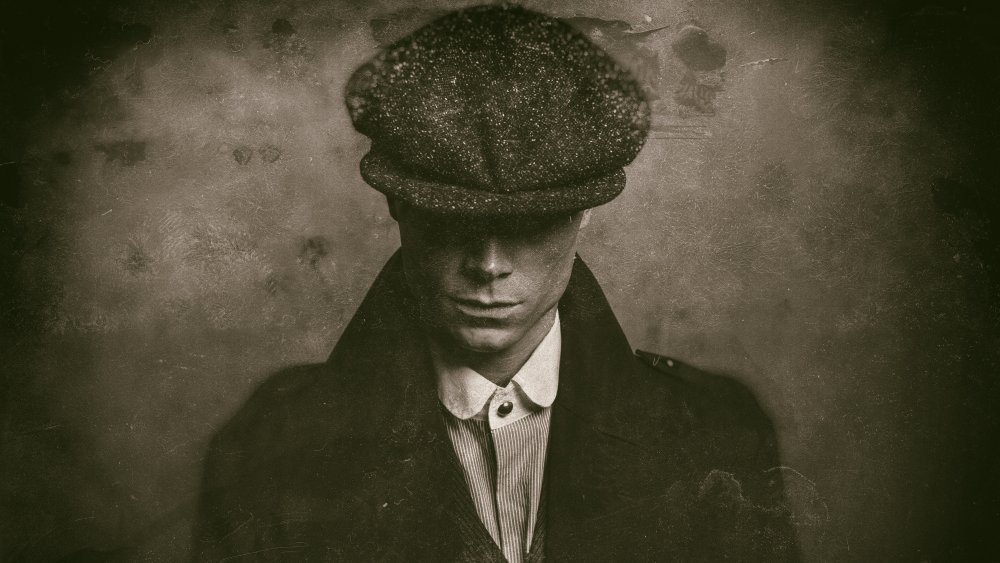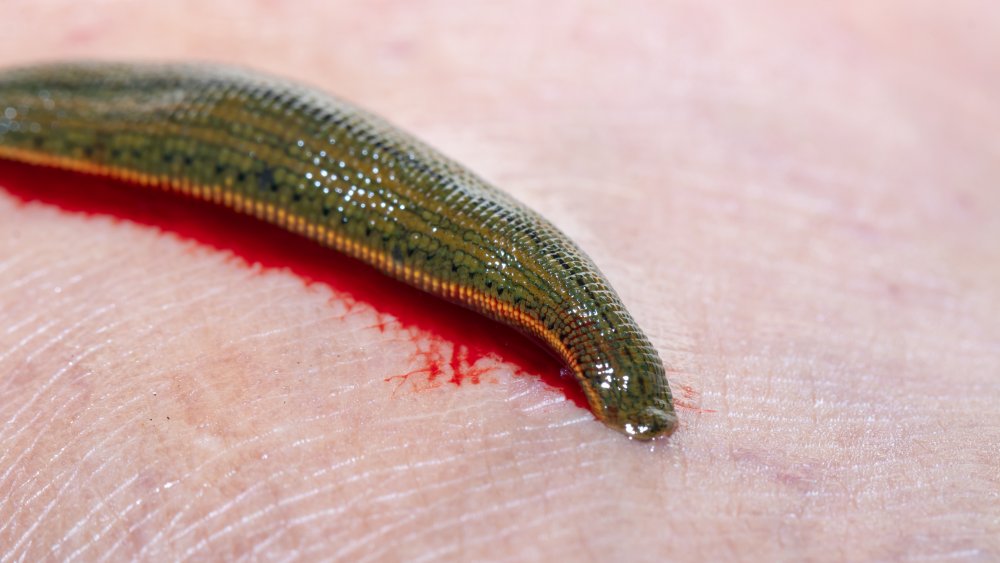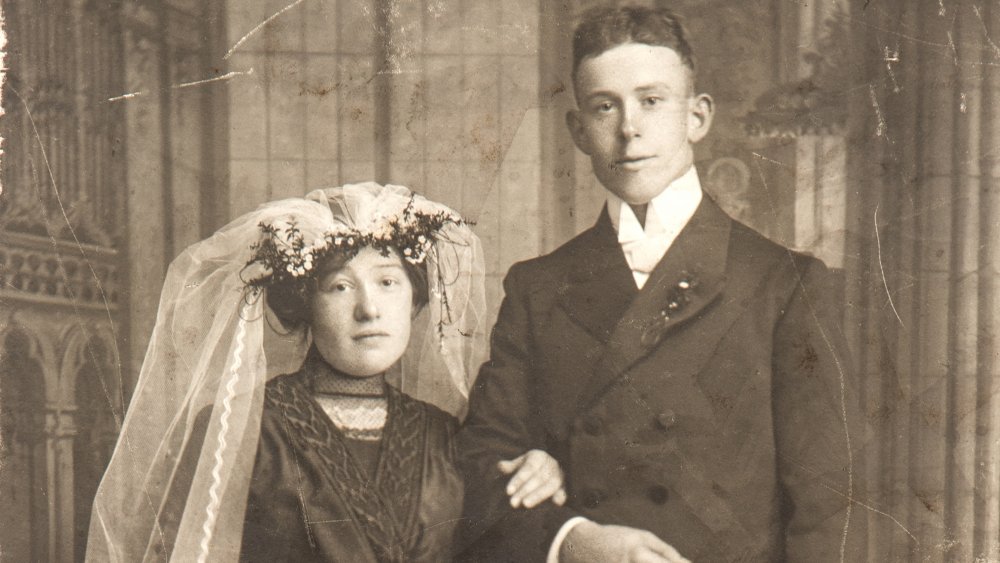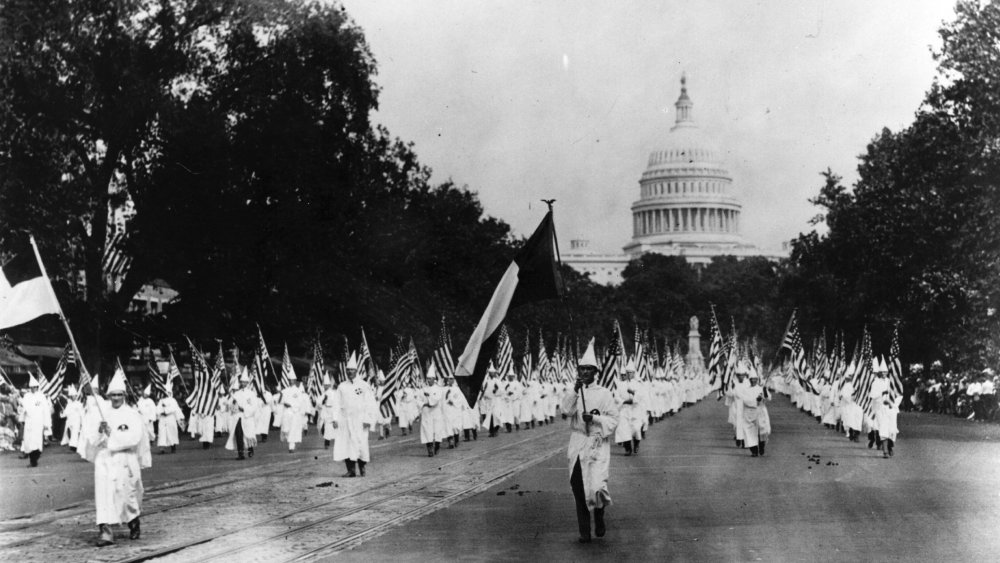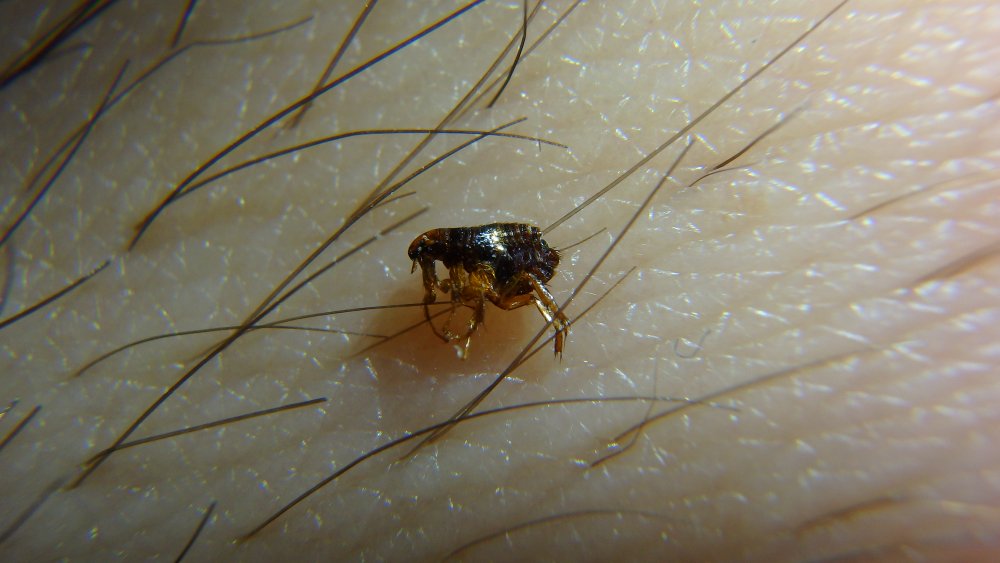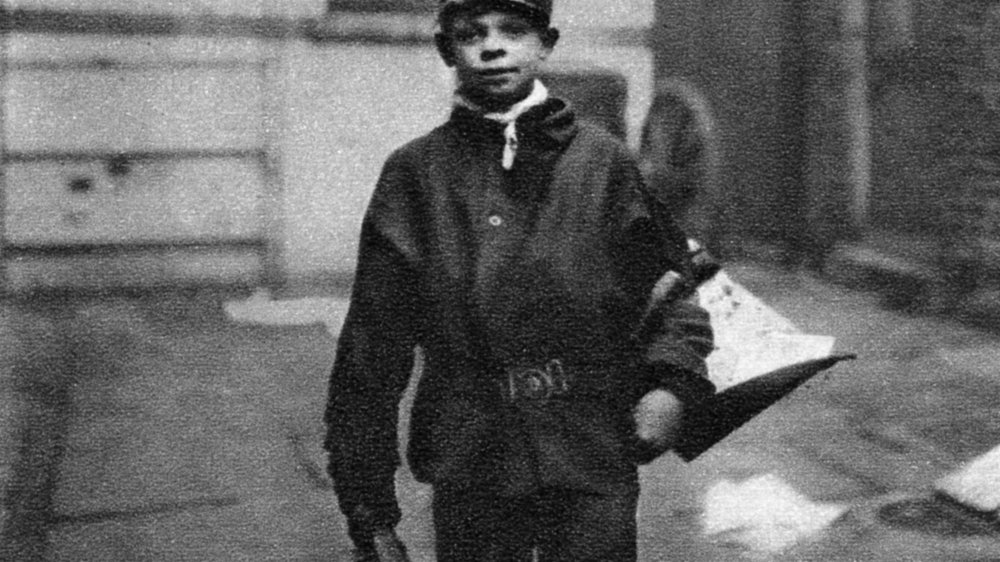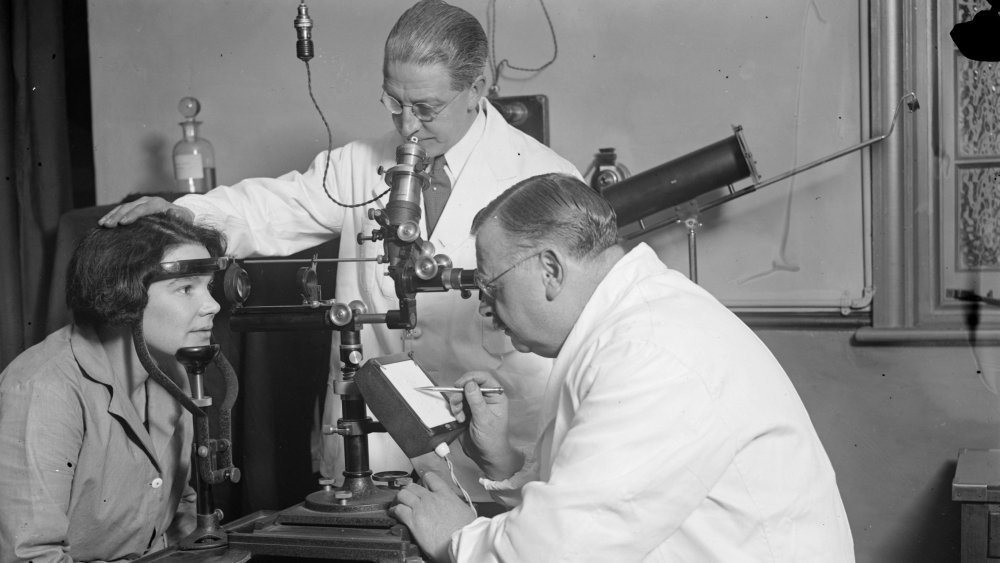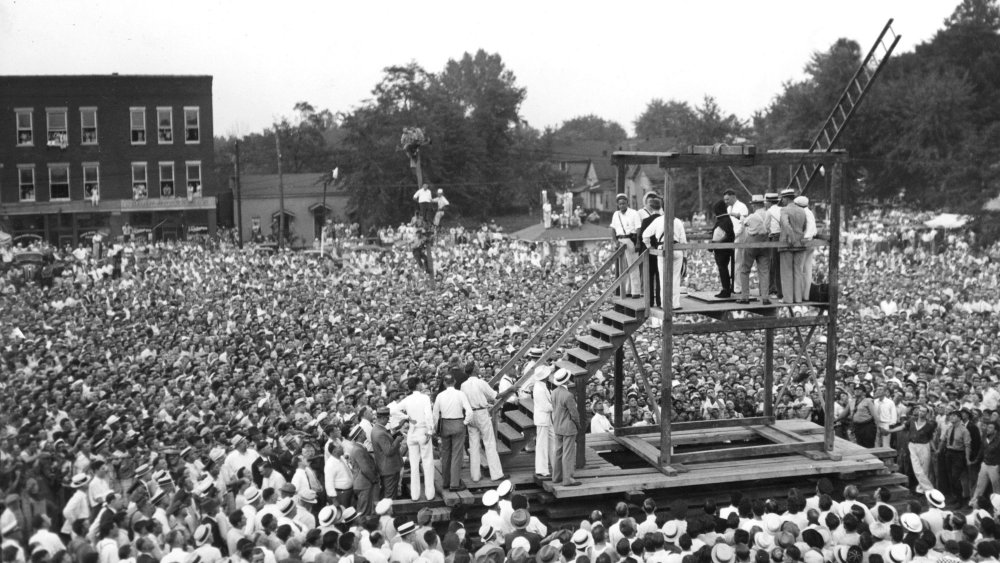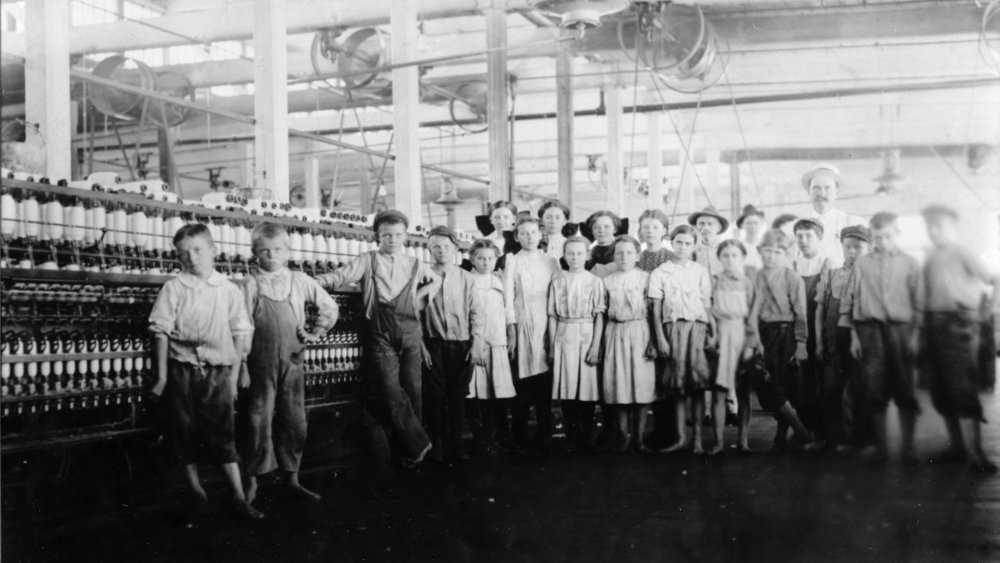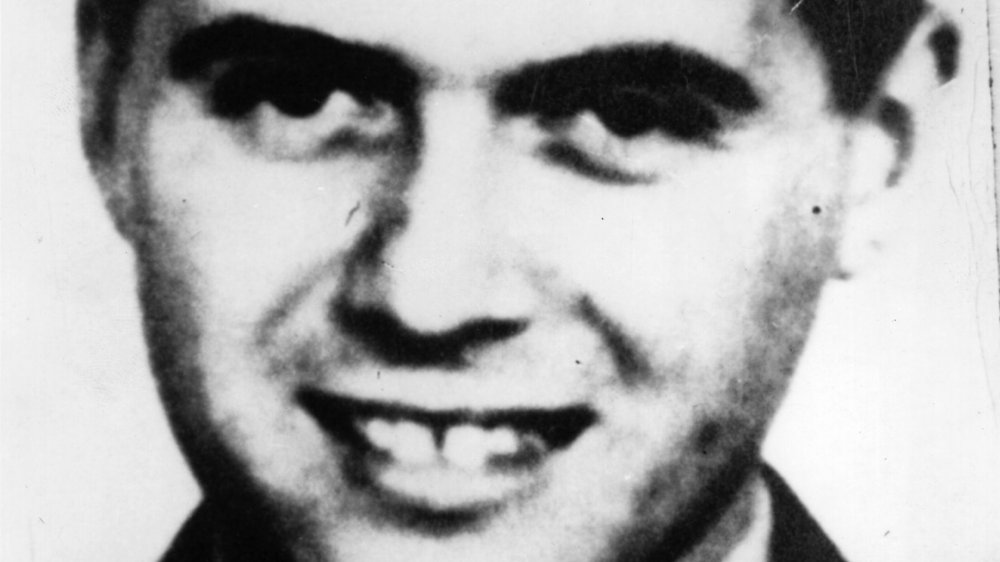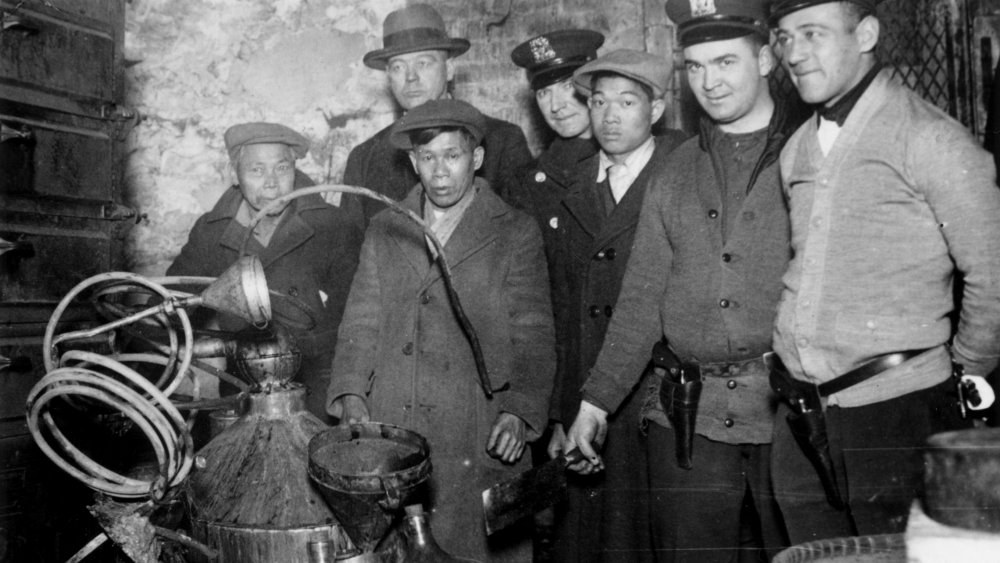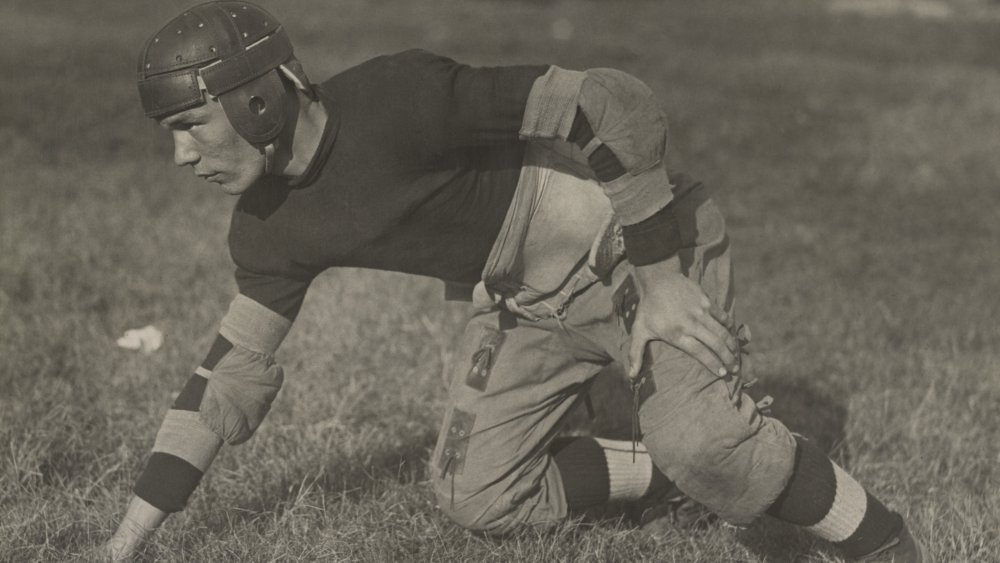Creepy Things That Were Considered Normal 100 Years Ago
America a century ago was an exciting place to be. New inventions like motion pictures and airplanes and radio were making the new century more interesting and more entertaining but also a lot creepier, too.
New political ideas and new technologies were transforming the way people lived but casting an ominous tinge over their lives. More than any before it, the 20th century was defined by scientific advancement. Unfortunately, as much as science is a process of (often expensive and lethal) trial and error, so, too, was much of the 20th century.
Medicine, law, war, and entertainment were all very different 100 years ago — not always for the better, sometimes for the worse, and frequently for the downright creepy. From police state authoritarianism to overwhelming racism and misogyny to who-thought-that-was-a-good-idea medical treatments, the steampunk ethos of the 19th century collided with the electrified 20th century with occasionally chilling results.
Leeches were medicine
When something is a synonym for "bloodsucker," we may hope society would find no use for it. However, as anyone who's dealt with lawyers or insurance agents knows, leeches have all manner of opportunities in society, including as literal bloodsuckers.
Starting in Egypt some 3,000 years ago, bloodletting has been a medical procedure for ancient cultures all over the world. Leeches were often used in this regard for a variety of reasons. They were extremely convenient for physicians: Not only were leeches actually designed to suck blood, but, as the Science History Institute unnecessarily describes, "could access hard-to-reach and sensitive areas, such as the inside of the ears, nose, mouth, and other even more intimate spaces."
While originally used in ancient Greece to balance the body's "four humors," leeching became an increasingly popular prescription for an increasing number of ailments and conditions. Fevers, flatulence, toothaches, and even hemorrhoids (oh dear God why) could be treated with leeches. Although leeching had effectively disappeared by the middle of the 20th century, it remained a folk remedy in some places in the States and has actually experienced a resurgence in legitimate medical circles in the 21st century. Today, doctors and medical researchers are using leeches to test and treat everything from cancer to osteoarthritis to, as Vice News helpfully reports, "painfully hard and long" priapism. They need to find other places to put those things.
Arranged marriages were common
The institution of marriage has evolved over the centuries. What it looks like, who is involved, what consequences you suffer responsibilities you have, and even the very reasons for marriage have undergone profound change since the early days.
Marriage as a formal arrangement between unrelated families may go back tens of thousands of years into the Stone Age. After genetic testing on some Russians who died 34,000 ago, researchers with the Universities of Cambridge and Copenhagen theorize that marriage may have begun as a conscious strategy to avoid inbreeding. For a very long time, marriage was little more than arrangements for men to produce and accumulate heirs. In fact, traditional marriage is actually a very recent idea, as polygamy, or at least a system of womb-using concubines for the monogamous, was the norm for most cultures for most of history.
Child marriage was also common. The age of consent in some places was basically whatever dad said. For most cultures up until the last few centuries, marriages frequently involved very young brides and/or grooms. This has only comparatively recently begun to change — although there have been hiccups in this historical trend. The Centers for Disease Control calculated that about six percent of American women marry by the age of 18 today, says historian Nicholas Syrett, while U.S. Census records reveal that in 1920, almost 12 percent of all American girls between 15 and 19 were married.
KKK marches were normal
America's origins were tainted by racism, but we fought a war to end that. However, Jim Crow got more powerful, a racist cheerleader became president, and by 1920, America was horribly racist. But it was family-friendly!
The Ku Klux Klan had been ridden out of town on a rail as the terrorists they were in the 1870s by President Grant, but by the time Woodrow Wilson took office, the ranks of the KKK had swollen. Wilson seemingly did all he could to boost their recruitment and aims as well, from resegregating the federal government to actually hosting a private viewing of The Birth of a Nation at the White House, and for the first few decades of the 20th century, the KKK was a visible presence in many places around the country.
The KKK was such an open, accepted part of American society that they would publicly sponsor festivals, family gatherings, and beautiful baby contests. The Klan would host and officiate weddings and christenings. They had cars entered in races and baseball teams. "In some places I studied in Indiana," sociology professor Kathleen M. Blee told NPR, "the local KKK was listed in the city directory, along with sewing clubs and agricultural societies." They fielded candidates for public office, too — the political ties were so deep that the 1924 Democratic National Convention is often referred to as "Klanbake."
Bubonic plague was still a threat
Yersinia pestis is a pretty famous bacterium. It has the greatest stage name ever, the Black Death, and rocked the 14th century so hard that one third of Europe was killed. Bubonic plague however, wasn't just a problem for Europeans dead hundreds of years ago — there were over 1,000 cases in the U.S. during the 20th century, per Scientific American.
Bubonic plague is primarily transmitted by fleabites, specifically from fleas carried by rats, like the ones that came to the U.S. aboard steamships bound for San Francisco in 1900. That city's Chinatown hosted the very first American outbreak of plague, and it scared California's leaders so much that they conspired to hide it from the rest of the country. San Francisco's mayor and the state governor, along with their willing accomplices in California's media and business titans, author Marilyn Chase explained to History, "actually appealed to and secured the collaboration of the surgeon general of the United States" in covering up the plague outbreak. At least 172 people died before the outbreak ended.
The first 25 years of the 20th century saw over 500 cases of plague, and they would usually be in port towns. In 1920, Galveston, Texas, was home to another outbreak. This time, the city acted quickly. The source of the disease was discovered (rats), and Galveston embarked on a two-year rodent murder spree that helped end the outbreak with only 11 dead.
Animal corpses and feces were everywhere
Cities have always had to deal with traffic and pollution. Even ancient Rome had rules about where horses could go and when. But in the 1800s, cities industrialized and grew so that by the dawn of the 20th century, metropolises like New York depended on hundreds of thousands of horses for delivery and transportation.
It would not have been unusual to see goats, ducks, pigs, or cows walking through cities in the late 19th and early 20th centuries. Sometimes, these animals, or the horses everyone depended on, would die in the streets and need to be carted off. However, transporting a several-hundred-pound carcass is difficult, and sometimes, they'd be left to putrefy for a while to make sawing them apart easier. The festering smells and disease-laden corpses were a public health hazard few modern city-dwellers could imagine.
A horse can deposit between 15 and 35 pounds of manure and up to a couple gallons of urine every day. City leaders around the world faced a huge problem, and in 1894, per Historic UK, The Times of London predicted that, "In 50 years, every street in London will be buried under nine feet of manure." Although automobiles and asphalt are what truly ended the age of the urban horse, it was in response to what some historians call "The Great Horse-Manure Crisis" that city planning and sanitation engineers became essential in future city growth.
Women's medicine was frightening
Health care in general wasn't a pleasant experience in the early 20th century (although it should've been, considering that heroin and cocaine were sold over-the-counter). For women, it was worse. It will probably be little surprise that women still faced challenges entering medicine. But they were also excluded from medical research for a very long time (so long, in fact, that including females in medical research trials was only made mandatory in 2016!), which probably had something to do with the baffling diagnoses and treatments that women could expect.
Per The Week, one popular 1907 book on pregnancy instructed doctors to prep pregnant women: "The hair around the genitalia should be cut short with scissors or shaved, scrubbed with hot sterile water, and bathed with bichloride solution." Acid, they suggested that the lady-bits be washed with acid. Another popular book of the same year theorized that the womb is directly connected to the clitoris and that birth pains could be treated by applying pressure "with the fingers on the terminal filaments of the sympathetic nerves in and around" the area.
A popular treatment to the dreaded female "hysteria," whose symptoms could basically be any behavior that men didn't like, purportedly involved doctors giving patients a pelvic massage until they orgasmed. Eventually, a visionary hero arose and invented an "electromechanical" treatment, which would lead to today's, shall we say, adult toys.
Public executions
From high infant mortality to the regular recurrence of deadly disease outbreaks to dead animals in the streets, it may be difficult to appreciate how closely acquainted with violence and death the average person was a century ago. The justice system of the day reflected the society it served: Traitors were shot, rapists were hanged, and justice was merciless.
Throughout its history, around 15,000 people have been executed in the United States. Like most countries and cultures, capital punishment was often a public spectacle in the U.S.A. In fact, the last public execution in the country was attended by as many as 20,000 people, fascinated by the fact that the executing sheriff was a woman. The negative publicity generated by the event, garnering headlines like this one from Evansville, Indiana: "Ghostly Carnival Precedes Hanging," encouraged lawmakers all across the states to ban the practice.
Of course, governments banning themselves from publicly killing citizens did nothing to deter civilians themselves from doing it. Lynchings were horrifyingly common in old-timey America: The NAACP reports that only five states can say that nobody was lynched there from 1882 to 1968. Public vigilantism was frequently resorted to for all manner of crimes: for cattle thieves and murderers in the West, and for basically being Black in the South. Of the 4,743 people lynched in the country between 1882 and 1968, 72 percent were Black.
Child labor was used for everything
For most of history, a newborn baby was generally viewed as one part future laborer and one part old age insurance policy. Children were expected to work from a very young age, helping around the farm, house, or business. By the turn of the 20th century, as the economy evolved and urbanization continued, children were employed in a great variety of industries and trades.
The U.S. Bureau of Labor and Statistics keeps track of these things and says that, in addition to the traditional farming and agricultural field labor that they'd always done, 100 years ago, rural youth could also be employed in resource extraction — mining, breaking up, and hauling coal. At coastal towns, they would be fishing, shoring, shucking oysters, or canning. In cities and towns of all sizes, children were employed by mills and factories, making everything from glass products to textiles to kitchenware to cigars. The big cities had legions of children buzzing around as couriers, drivers, cleaners, newsies, and much more.
Child labor was integral to just about every level of the American economy, but the children themselves usually didn't even get to enjoy their wages. The BLS said of child workers: "Society viewed them simply as an extra money-earning appendage of the mother or father."
Eugenics was science and law
Eugenics was/is the pseudoscientific theory that humans can consciously improve the species through racism. For decades, governments around the world tried to improve their citizens — not their lives but the citizens themselves. Eugenics is a breeding program for humanity: breeding ourselves into a better species.
The president of the Natural History Museum said in his opening address to a 1923 eugenics conference, "For the worlds work give me a pure-blooded ... ascertain through observation and experiment what each race is best fitted to accomplish." In other words, responsible governments should make sure the individual races stay in their place and not pollute each other through interbreeding. Those who prove unfit should just be sterilized. "It is better for all the world, if instead of waiting to execute degenerate offspring for crime or to let them starve for their imbecility, society can prevent those who are manifestly unfit from continuing their kind." said Justice Oliver Wendell Holmes in a famous case upholding sterilization laws.
In all, 32 states passed some kind of eugenics law at some point. Eugenics was popular and considered progressive. Leaders of organizations like Planned Parenthood and the ACLU joined luminaries like Teddy Roosevelt and Alexander Graham Bell in supporting eugenics programs. California, with its high levels of anti-Mexican and anti-Asian attitudes, was particularly aggressive — and successful. Over 20,000 Californians were sterilized in the 20th century.
The government tried to kill drinkers during Prohibition
On January 17, 1920, after a decades-long effort to convince Americans that society would be improved by banning liquor, the sale of alcoholic beverages in the United States was made illegal. They were wrong. America turned into a creepy steampunk dystopia where the government tried to poison you while cops and politicians took their orders from the Mafia and the KKK.
Resistance to Prohibition appeared immediately. Maryland flatly refused to enforce it, and many states and municipalities underfunded enforcement. Banning the production and sale of alcohol didn't diminish the desire, so, naturally, a market emerged to supply it. And since alcohol was now a most profitable substance, bootleggers and Mafia bosses who sold it had lots of money to bribe police officers, politicians, and judges. Police were openly corrupt, and since Prohibition was largely driven by racist, anti-immigrant and anti-Catholic attitudes, it helped fuel the Klan's resurgent terror campaign.
Thirsty Americans risked prison to buy beer. And sometimes their lives. Homemade booze, "bathtub gin," killed four times as many people during Prohibition as it did prior. By 1926, these deaths were less accidental and more deliberate. According to Vox, since much of the homemade liquor was made using industrial alcohols, the feds increased the amount of methanol, a deadly poison, required to make industrial alcohols. Famed humorist Will Rogers quipped that "governments used to murder by the bullet only. Now it's by the quart."
Mental health care was...
Health care might have looked scary for women 100 years ago, but mental health care was terrifying for everyone. It probably shouldn't surprise that an era obsessed with science and new technology might produce psychiatric treatments more akin to Philip K. Dick than to the DSM.
As noted by Origins, treatment for mental illness was fashionable for eugenics supporters. States commonly prohibited marriage for individuals with mental illness or went one step further and sterilized them. Over 65,000 mentally ill Americans were sterilized until the last such operation in Oregon (in 1981?!). Schizophrenia could be treated with insulin shock therapy, where patients are given progressively larger doses of insulin, leaving them at high risk for brain damage. One New Jersey doctor thought mental illness was caused by untreated infections and went on a 20-year spree of unnecessarily removing teeth, tonsils, and even organs from patients searching for the crazy-making disease, killing 30 to 45 percent of them.
But it wouldn't be the early 20th century without electricity and sexism. There was electroshock therapy, which induces seizures by electrocuting the patient and (the horrifying initial overuse of the procedure notwithstanding) is actually still practiced today. Even as women fought for the right to vote, there were still doctors who "went so far as to posit a direct and casual [sic] connection between women's reproductive organs and insanity" and sent women to asylums for obvious signs of insanity, which could be pretty much anything men didn't like.
Sports were bloody
Thanks to new inventions like radio, people were finding new ways to entertain themselves in the 1920s. It's often referred to as the Golden Age of American Sports, and Americans paid good money for athletes to perform ... or to watch men pummel concussions into each other or watch animals tear each other apart.
Cockfighting involves two roosters slashing each other to death while gamblers watch. It's one of the world's most ancient pastimes, and it saw a revival of interest in the 1920s, according to the White River Historical Quarterly. Dogfighting may be older still, and this decade saw it migrate from a sport for rural people to one for the inner city, possibly due to the influx of English and Irish immigrants. Just about any sport one could want to bet on, any competition between animals, or between men and animals, could be found in places like New York City and San Francisco.
More traditional sports, with actual human athletes, were also far more brutal than today. Even the bravest, hungriest NCAA third-stringer would hesitate to play football with what passed for protective equipment in the 1920s (although football's deadliest time was actually the 1960s). The king of sports, boxing, attracted thousands of spectators in the '20s and international audiences on the radio. Even though bare-knuckle bouts had been largely phased out over the preceding decades, over 200 boxers died in the ring that decade.
